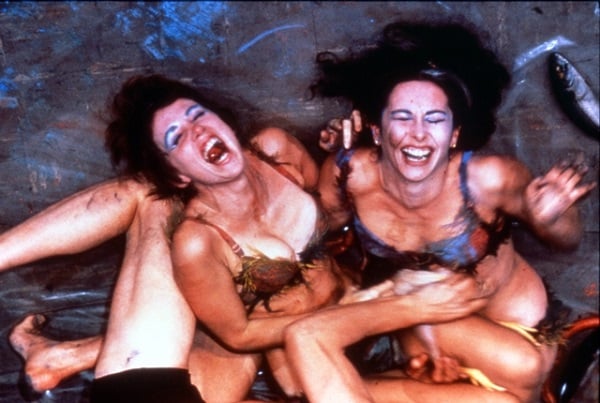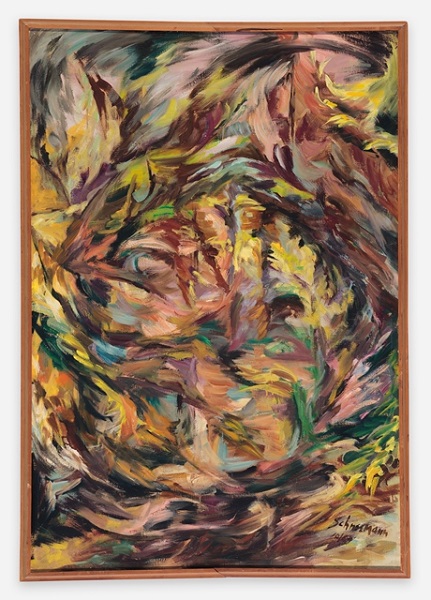Art World
Artist Carolee Schneemann Finally Gets a Comprehensive Retrospective
The artist gets recognized as a painter, of sorts.

The artist gets recognized as a painter, of sorts.

Alyssa Buffenstein

Carolee Schneemann is known for pulling a scroll from her vagina or rolling around with dead fish and chickens in the name of art. But sitting in front of a canvas, brush in hand? Not so much.
An upcoming retrospective of the artist, choreographer, performer, and writer’s work at the Museum der Moderne in Salzburg titled “Carolee Schneemann: Kinetic Painting,” will dispel many of the stereotypes surrounding the feminist’s artists life and work.
The retrospective does something unexpected: it attempts to contextualize Schneemann’s work within the canon of painting. Known for shocking, erotic performances and video works, her style of “painting,” the museum argues, is “beyond the canvas.” Rather than acrylics and oils, she used mud and menstrual blood.
Which begs the question: Is it really necessary to call an experimental artist a painter in order for her work to be taken seriously in a museum?

Carolee Schneemann Early Landscape (1959), Oil on canvas.
Image: Courtesy of C. Schneemann and P.P.O.W Gallery, New York
The retrospective will make Schneemann’s work more palatable for general audiences by presenting her early works, landscapes and portrait paintings from the 1950s. The word “landscape,” though, hardly describes colorful, frenzied abstractions such as Early Landscape (1959).
More than 350 works will be on display, tracing the artist’s trajectory from early paintings and constructions, like the fur and tin-can “Fur Wheel” (1962) to later ecstatic, feminine-fury, full-body performances like “Up to and Including Her Limits” (1973–1977), in which the artist used her body, suspended from a harness, as a mark-making tool until exhausted.
The show claims to delve into less-known corners of Schneemann’s ouevre, presenting a true retrospective with promises of previously unpublished works. But the show also makes promises of “embedding [Schneemann’s work] in the context of painting and encouraging a wider audience to explore her art,” implying that without ties to more traditional forms of art-making, the work is inaccessible to general audiences.
It doesn’t seem like a coincidence that an artist whose experimental work deals with the female body and sexuality is watered down to comply to the historically male-dominated mode of painting. But hopefully the avant-garde in Schneemann will still provoke the audience the museum hopes to attract.
“Carolee Schneemann: Kinetic Painting” is on view from November 21, 2015–February 28, 2016.